Learn how the colors associated with the Northeast direction in Feng Shui can transform your environment and optimize your life's energy flow.

Feng Shui Northeast Colors
As you explore the ancient art of Feng Shui, as you delve into the complex network of its principles, the importance of the Northeast direction and its associated colors can't be overlooked.
These colors, each with their unique vibrations, play a crucial role in balancing the energy in your living space. But how do you know which colors to choose? What impact do they have on the flow of chi?
Let's embark on this intriguing journey of color selection, leaving no stone unturned in our quest to create a harmonious environment.
Key Takeaways
- Northeast direction in Feng Shui signifies knowledge and personal growth, influencing emotional and spiritual realms.
- Preferred Northeast colors include earth tones for wisdom and avoidance of grey or silver that can inhibit growth.
- Consideration of personal energies and seasonal impacts is crucial in choosing the right Northeast colors.
- Incorporating Northeast colors at home involves blending Feng Shui principles with modern design for harmonious spaces.
Understanding Feng Shui

To fully grasp the essence of Feng Shui, you've got to dive into its ancient Chinese origins and understand its basic principles revolving around harmony, balance and energy flow. At the heart of these principles are Feng Shui basics, which encompass the delicate balancing of Yin and Yang. These two ancient concepts represent the opposing yet complementary forces that make up the universe and life as we know it.
Yin, symbolizing darkness, passivity, and femininity, is the perfect counterbalance to Yang, which represents light, activity, and masculinity. In the context of Feng Shui, the goal is to achieve a harmonious balance between these two forces in your surroundings. For instance, a room with too much Yang may feel overly energetic, causing restlessness. Conversely, a space with excess Yin may feel too passive or even depressing.
In a nutshell, the Feng Shui basics are about curating spaces that promote good energy flow or 'Chi', which is achieved by balancing Yin and Yang. By understanding and applying these principles, you're not just arranging furniture or decorating; you're creating an environment that can positively influence your life. Remember, the beauty of Feng Shui lies in its simplicity and its profound impact on well-being.
Importance of Northeast Direction
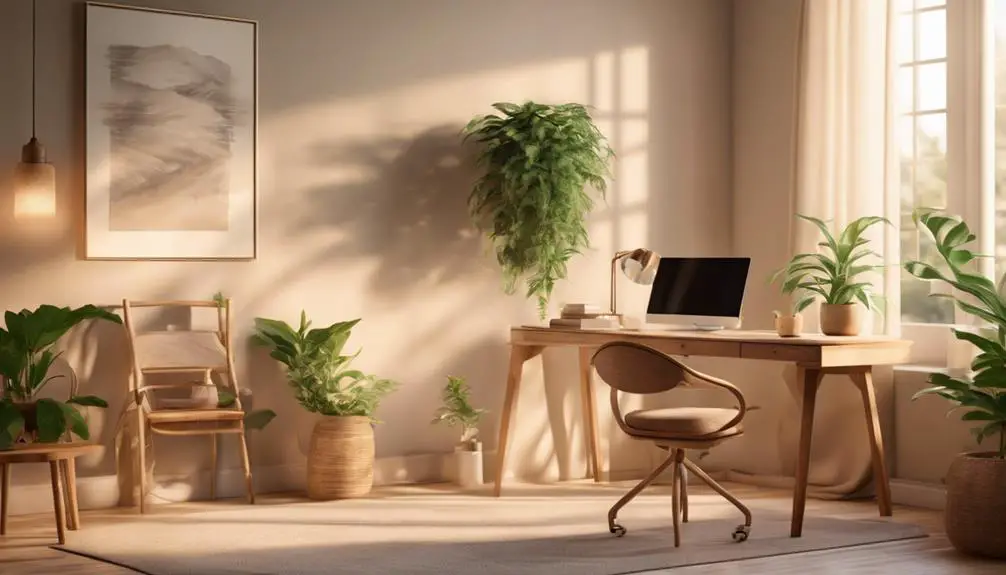
In the realm of Feng Shui, the northeast direction holds significant importance, often associated with knowledge, personal growth, and exploration. It's not just about physical direction; the Northeast Symbolism extends into the spiritual and emotional realms, influencing your personal journey.
Directional Influences play a significant role in Feng Shui, and the northeast is no exception. It's believed that honing in on this direction can bring about wisdom and serenity, and help you gain a deeper understanding of yourself and the world around you.
To help you better understand the importance of the northeast direction in Feng Shui, here's a table that breaks down its significance:
| Direction | Symbolism | Influences |
|---|---|---|
| Northeast | Knowledge & Personal Growth | Wisdom & Serenity |
| Southeast | Wealth & Prosperity | Motivation & Success |
| Southwest | Relationships & Love | Harmony & Balance |
| Northwest | Travel & Helpful People | Opportunities & Change |
Colors and Their Meanings
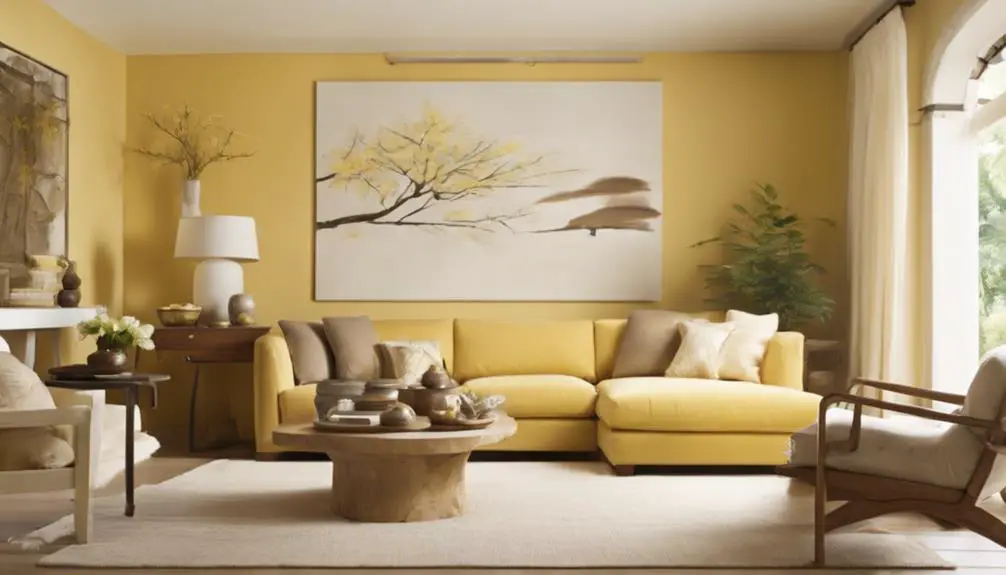
While embracing the wisdom and serenity of the northeast direction, you'll also want to consider the distinct Feng Shui colors and their meanings, as they can further enhance your personal growth journey. Each color carries a particular energy, or chi, that can influence your mood, thoughts, and overall well-being.
Delve into the profound world of color symbolism. For instance, red represents the fire element, symbolizing good fortune and joy in the Chinese culture. Blue and black, associated with the water element, signify wisdom and calmness. Green, symbolizing the wood element, is a color of growth and renewal. Yellow and brown, connected to the earth element, are colors of stability and reliability. Lastly, white and metallic hues, tied to the metal element, convey purity and precision.
These cultural interpretations play a significant role in Feng Shui color theory. However, remember that these meanings aren't set in stone. The way you resonate with a color is also essential. After all, Feng Shui is all about creating a harmonious environment that aligns with your personal energy. So, consider these color meanings as a guide to deepen your understanding and enhance your Feng Shui practice.
Choosing the Right Northeast Colors
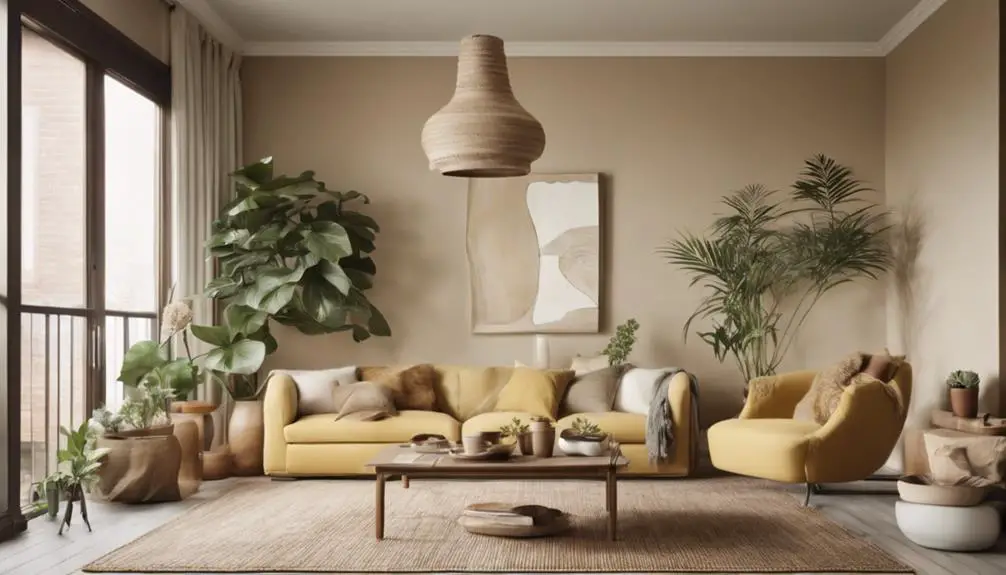
Start diving into the nuances of northeast Feng Shui by thoughtfully selecting colors that promote wisdom, personal growth, and serenity. Your choice of color can significantly impact your mood and energy, so it's essential to choose wisely.
Understanding color symbolism in cultures helps to make informed decisions. For instance, in Feng Shui, earth tones like beige, sandy, or yellow represent the earth element and are perfect for the northeast. They're believed to attract knowledge and wisdom. On the other hand, grey or silver, which represent the metal element, can inhibit personal growth. Therefore, you'd want to limit their use in this area.
Seasonal color impacts also play a role in your selection. During colder seasons, warmer colors can help maintain a sense of warmth and coziness. Conversely, in warmer seasons, cooler colors can create a refreshing and calming atmosphere.
When choosing the right northeast colors, it's not just about aesthetics. It's about harmonizing your surroundings with your personal energies. By making these strategic choices, you're not only enhancing your home's visual appeal but also fostering your wellbeing and personal growth.
Incorporating Northeast Colors at Home
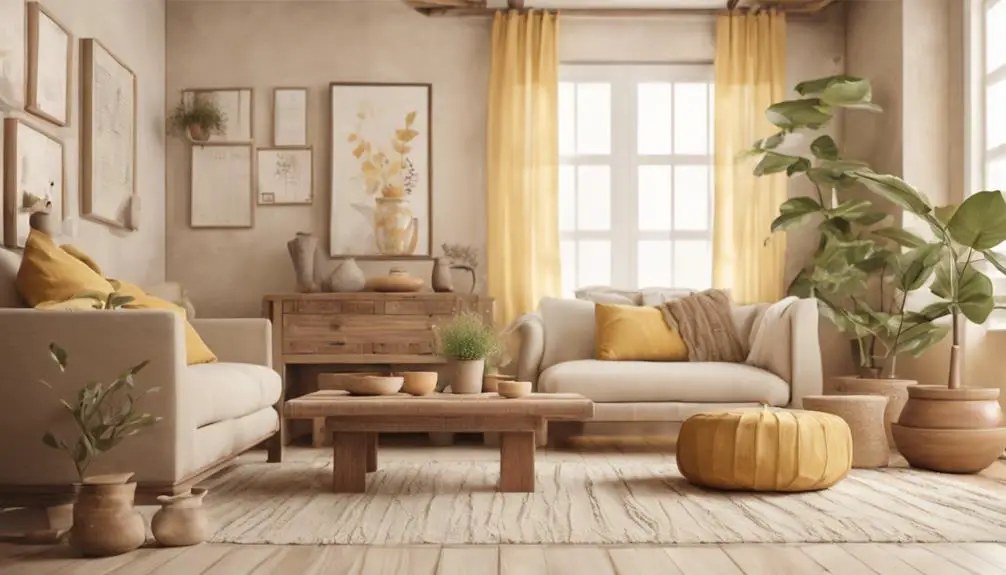
To effectively incorporate northeast colors into your home, you'll need to understand not only the principles of Feng Shui but also how different hues interact with each other and your space. Each color has its unique energy, and using them wisely can enhance the overall harmony of your home.
Color placement strategies are vital in this process. Feng Shui recommends using darker hues in the lower parts of your home, like the basement, and lighter ones on the upper floors. This mimics the natural energy flow from earth to sky. However, don't limit your palette to these recommendations. Be flexible and consider the specific needs of each room.
Also, keep abreast with the Northeast color trends. These trends can provide inspiration on how to blend Feng Shui principles with modern aesthetics. Recently, earthy tones like rich browns and greens have been popular, bringing a sense of grounding and stability to home spaces.
Effects of Northeast Colors on Energy Flow
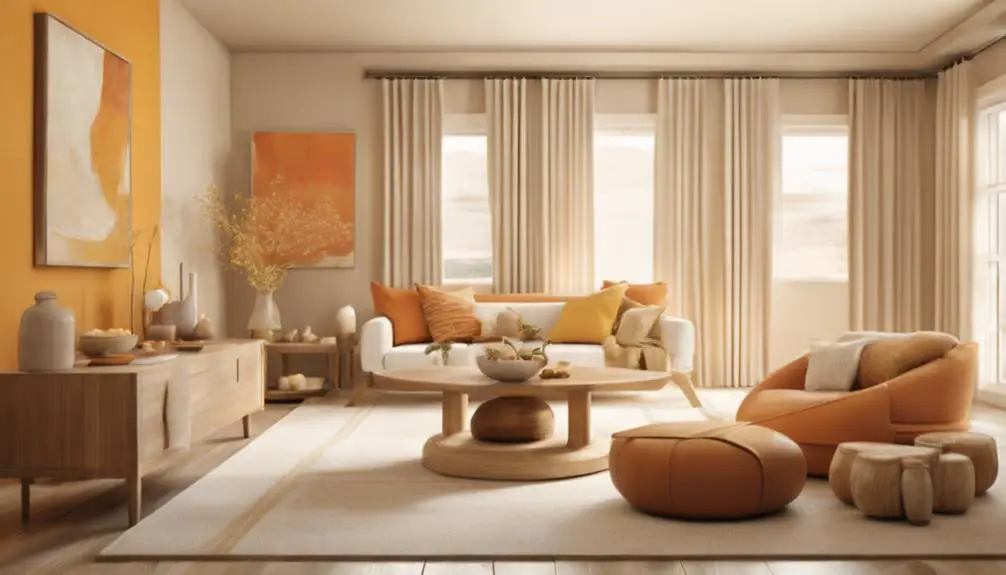
Understanding the effects of Northeast colors on energy flow in your home can significantly influence its overall energy balance and harmony. When you tap into the principles of color psychology, you're not just decorating; you're enhancing the energy dynamics of your space.
Northeast colors like beige, soft yellow, and clay create an atmosphere of calmness and serenity. They're associated with the earth element in Feng Shui, promoting stability and nourishment. When these colors dominate your Northeast sections, they don't just please your eyes; they cultivate an energy balance that's conducive to personal growth and self-improvement.
But it's not all about the color scheme. The way you distribute these colors matters also. An overuse of earthy tones can lead to a sense of stagnation. To avoid this, you need to strike a balance by integrating colors associated with other Feng Shui elements.
In essence, the right Northeast colors can boost the energy flow in your home, creating a harmonious and vibrant living space. However, it's equally important to understand that achieving this requires a mindful and balanced approach to color usage. Feng Shui is, after all, the art of balance.
Frequently Asked Questions
What Other Cultural or Philosophical Systems Influence Color Choices Similar to Feng Shui?
Just like feng shui, various cultural and philosophical systems influence color choices. You'll find color symbolism in different cultures, each with its unique interpretation.
Historical origins of color symbolism trace back to ancient civilizations. For instance, in Western cultures, black often symbolizes death or evil, while white signifies purity. In India, however, white is associated with death and mourning.
It's fascinating to see how different cultures perceive colors.
How Can I Incorporate Feng Shui Colors in My Workspace or Office?
You can enhance your workspace using Feng Shui colors to boost productivity and mood.
Start with color coordination for productivity. Choose calming blues for brainstorming areas, vibrant yellows for creative spaces, and greens for areas where balance is needed.
Remember, the impact of color on mood is significant. Experiment with various shades until you've created an atmosphere that promotes positivity and productivity.
It's all about creating a harmonious environment.
Are There Any Feng Shui Colors That Are Considered Unlucky or Negative?
In Feng Shui, no color is considered outright unlucky or negative. However, color symbolism in Feng Shui plays a crucial role. Each color corresponds to a specific element and direction.
Using the wrong color can have negative impacts. For instance, if you're using too much fire color (red) in a water area (north), it could disrupt the energy balance.
It's essential to understand the relationships between the colors, elements, and directions to create a harmonious space.
How Does Feng Shui Color Theory Intersect With Modern Color Psychology?
In Feng Shui, colors carry emotional impact, affecting your energy and mood. Modern psychology also recognizes this, though interpretations can differ.
For example, red in Feng Shui promotes luck, while psychology sees it as stimulating. Blue, representing tranquility in both, can also symbolize wisdom in Feng Shui.
It's fascinating how these theories intersect, isn't it? You're seeing how ancient wisdom and modern science can both influence your surroundings.
Can the Principles of Feng Shui Color Selection Be Applied to Personal Fashion and Attire?
Absolutely, you can apply Feng Shui color principles to your fashion and attire. By selecting clothes in colors that align with your personal energy, you're essentially wearing Feng Shui accessories.
This not only enhances your personal energies but can also impact your mood. For instance, choosing colors associated with calmness can help you feel more relaxed.
It's all about balancing and harmonizing your energy with the color theory of Feng Shui.
Conclusion
Incorporating Feng Shui's northeast colors at home can significantly affect energy flow. Remember, colors like sand, clay, beige, or soft yellow promote knowledge and tranquility.
By understanding their meanings, you're empowered to create an atmosphere of harmony and balance. Don't underestimate the importance of the northeast direction, it's your route to a more serene and balanced life.
Start experimenting with these colors today, and you'll feel the positive shift in no time.

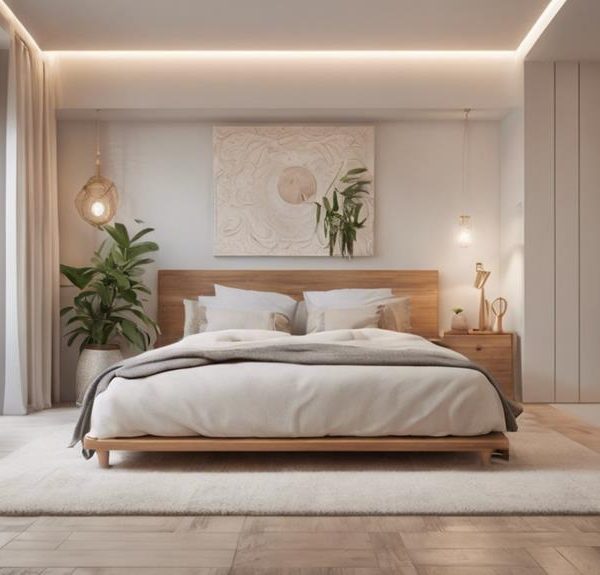
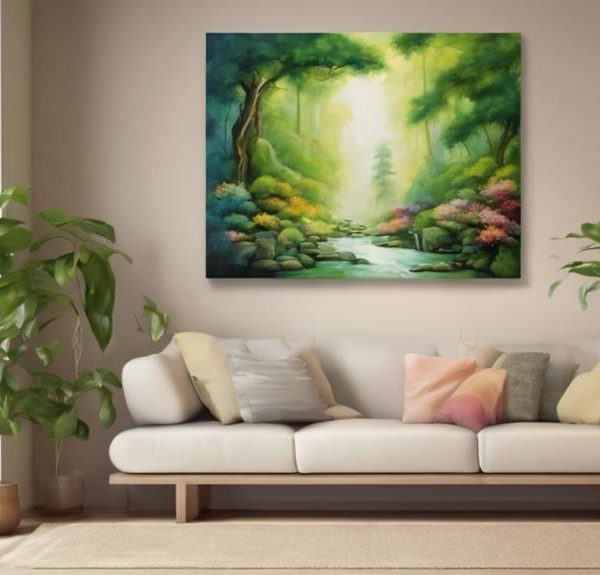
Sign up